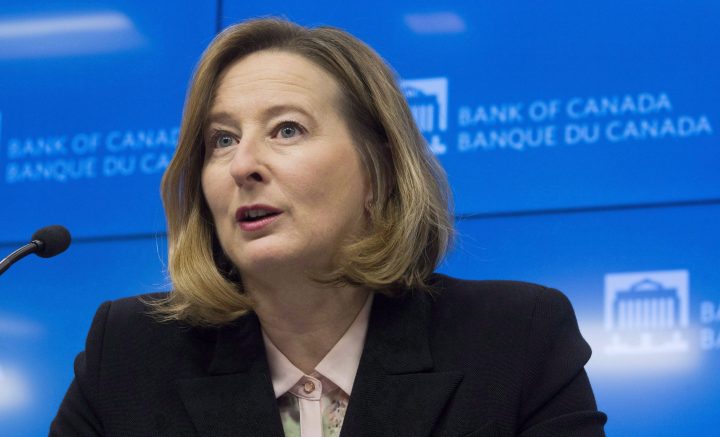The unknown consequences of ongoing trade tensions were “front and centre” in the Bank of Canada’s decision this week to leave its key interest rate unchanged, a top Bank of Canada official said Thursday.

In a speech one day after the rate announcement, senior deputy governor Carolyn Wilkins acknowledged it’s difficult for the central bank to estimate the “highly uncertain” economic fallout from tit-for-tat tariffs between Canada and the U.S., and the resulting blow to business confidence.
“The implications of the current trade environment were front and centre,” Wilkins told the Saskatchewan Trade & Export Partnership as she provided a sense of the deliberations behind the interest rate decision.
“The trade environment… has been top of mind for some time given its importance to economic prospects here at home and abroad. And, while Canadian officials have been working hard to resolve the issues, a lot of uncertainty remains.”
WATCH: Freeland on NAFTA talks: Canada, U.S. need fresh ideas

The Bank of Canada held its trend-setting interest rate at 1.5 per cent Wednesday. It made a quarter-point increase at its July policy meeting and has hiked it a total of four times since mid-2017.
With Canada’s economy operating close to full tilt, many experts predict bank governor Stephen Poloz to raise the rate again at the Oct. 24 meeting.
Taking all the uncertainty into consideration, Poloz has followed what he’s described as a “gradual approach” to lifting the rate up from historically low levels.

Get daily National news
WATCH: Trump calls NAFTA talks ‘intense negotiations’

On Thursday, however, Wilkins said the governing council debated whether the gradual approach continued to be appropriate, which suggests the bank considered either intensifying the pace of its interest-rate increases or slowing it down.
In the end, she said the group agreed the current, go-slow approach remained the best way to proceed.
“Balancing that ‘going too fast’ and ‘going too slow’ is something that we have in our minds and, in fact, we have in our minds almost every time,” Wilkins told reporters during a post-speech news conference when asked to elaborate on the bank’s internal discussions on rate-change pacing.
In her address, Wilkins noted how the Canadian economy has shown signs that it can adapt to higher rates. The economy has continued to perform well, with much of the growth fuelled by stronger exports, consumption and improving business investment, she said.
But unpredictable trade conditions have had consequences, Wilkins said.
The central bank estimates the tariffs already in place, combined with business uncertainty, will trim about two-thirds of a percentage point from Canada’s gross domestic product by 2020.
WATCH: ‘No NAFTA is better than a bad NAFTA deal’: Prime Minister Justin Trudeau

After just a couple of months, the tangible effects of the cross-border tariffs on steel, aluminum and consumer goods have already started showing up in the economic data, Wilkins said.
Due to the uncertain trade environment, she said the central bank’s estimates may need be adjusted as more information rolls in about the fate of NAFTA’s renegotiation and how businesses are responding with their plans.
WATCH: Freeland says NAFTA talks atmosphere is constructive, both parties continue to work hard

She said businesses point to trade uncertainty as a key factor stopping them from pouring more money into their operations to keep up with growing demand – and some say they’re exploring whether to invest in the U.S. instead of Canada.
The federal government has been renegotiating NAFTA with the U.S. and Mexico for the last 13 months. U.S. President Donald Trump has repeatedly threatened to impose punishing auto tariffs on Canada – which would be devastating for both economies – if a deal cannot be reached.
“The big picture over the summer has been that the global economy is doing well, despite some troubling developments on the trade front,” Wilkins said.
“The Canadian economy is on solid footing, although we are feeling some headwinds from the trade environment.”
Earlier this summer, Ottawa responded to American tariffs on Canadian steel and aluminum by imposing retaliatory levies on $16.6-billion worth of U.S. imports of the metals and other products.







Comments